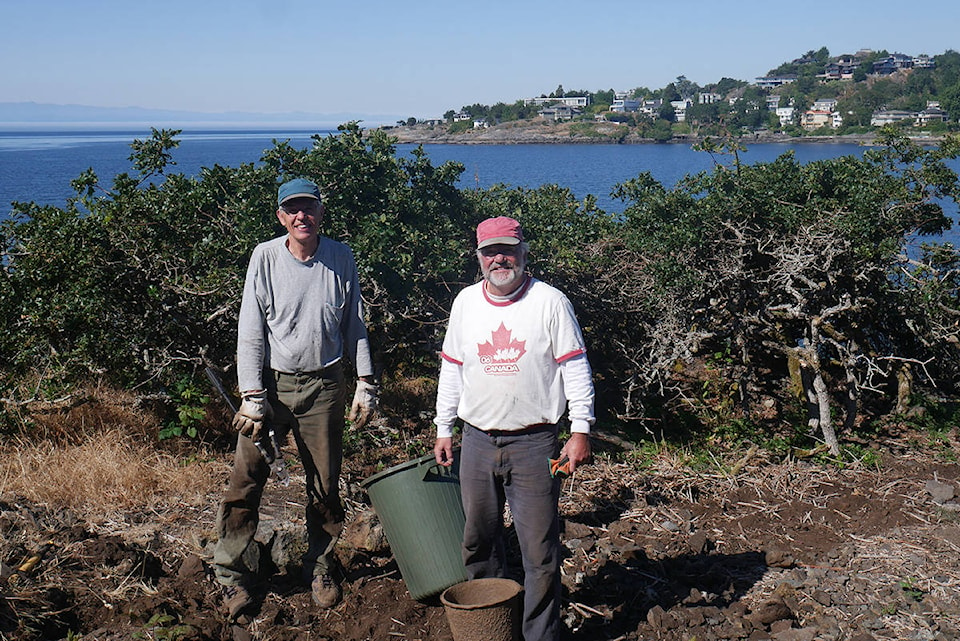Volunteers are working to rid the coastal bluff along McNeill Bay of invasive species over the next decade.
Community Association of Oak Bay members Jacques Sirois and Leo Gauthier are in the early stages of clearing the scores of English ivy, Himalayan blackberry, daphne and English hawthorn currently blanketing the cliff along Beach Drive and harming native species including Scouler’s willows, black hawthorn and dwarf Garry oaks.
The project was proposed when Oak Bay formally endorsed the United Nations Decade of Ecosystem Restoration and encompasses shoreline that is part of the Victoria Harbour Migratory Bird Sanctuary. While the upper section of the bluff may be cleared by year’s end, Sirois and Gauthier hope to finish restoring the entire area by 2031.
ALSO READ: Ten years in, Greater Victoria’s 100-year Bowker Creek blueprint gets a boost
“They’re rewinding and restoring the McNeill Bay bluff, which is a rare coastal bluff that was totally degraded by all kinds of invasive plants,” said Chris Hyde-Lay, parks services manager.
The support of Hyde-Lay and the district have been instrumental, providing weekly waste collection and disposal service.
“But, to take care of these natural areas, citizens have to pitch in,” Sirois said.
Nearby, Nancy and Martti Tienhaara are working in the tree canopy at Kitty Islet to remove what remains of invasive plants that once engulfed the clearing – a project started in September 2019 with the assistance of Sirois and Gauthier.
Sirois said the area was covered in ivy for as long as a century and described the deformed trees as spectacles from a children’s story.
The volunteers don’t use herbicides and work at a steady pace, coming Tuesday and Friday morning for a couple hours of physically exhausting work. Closing off the restoration areas is vital, preventing people and dogs from transferring invasive plant seeds by foot.
ALSO READ: Maritime Museum of BC moves around corner to Victoria storefront
Community-led ecosystem restoration has been happening in Oak Bay since 1993, with initial efforts at Anderson Hill and Uplands Park and spanning in the years since as far as Mary Tod Island and the Trial Islands Ecological Reserve.
“Arguably, we’ve got the best nature in urban Canada,” said Sirois. “We live in a special place, so it needs special attention.”
He does not intend for the cleared bluff to become open to the public, noting there are already enough coastal access points and that the area is being restored for its own benefit.
While most passersby have been supportive, some have reacted negatively and taken down signs provided by the district. Others are doubtful the project will ever be finished.
Sirois remains hopeful, having helped restore a marsh near his school in Quebec City when he was 12 and seen the benefit of his work for later generations.
“Keep your judgement until 2031,” he said with a smile.
Do you have a story tip? Email: vnc.editorial@blackpress.ca.
Follow us on Twitter and Instagram, and like us on Facebook.
